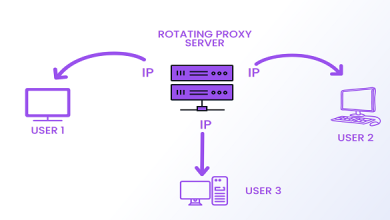
Integrating Social Media In Web Design: Leveraging Social Networks For Business Growth
Social media has become an integral part of our daily lives, influencing how we communicate, gather information, and make purchasing decisions. As a web design company, understanding the importance of integrating social media into website design is crucial for leveraging social networks to drive business growth. This article explores the benefits, strategies, and best practices for effectively incorporating social media elements into web design to enhance brand visibility, increase website traffic, and engage with target audiences.
The Power Of Social Media In Business
The evolution of social media platforms from simple communication tools to effective marketing channels. Businesses can leverage the vast reach and engagement potential of platforms like Facebook, Instagram, Twitter, and LinkedIn to connect with their target audience, build brand awareness, and drive conversions. By integrating social media in web design, companies can unlock a myriad of benefits.
Enhancing Brand Visibility And Recognition
Integrating social media icons and sharing buttons prominently on a website encourages visitors to connect with the brand across various social networks. This integration helps increase brand visibility, allowing visitors to share content and recommend the website to their own social circles. Implementing social media widgets can also display real-time social media feeds, showcasing the brand’s active presence and fostering a sense of trust and authenticity.
Driving Website Traffic Through Social Sharing
Incorporating social sharing buttons strategically within a website’s design enables visitors to easily share interesting content with their social connections. When website content is shared, it can attract new visitors and prospective consumers, thereby promoting organic traffic. By optimizing social sharing buttons to include enticing descriptions and visually appealing images, businesses can increase the likelihood of content being shared, expanding their online reach.
Engaging And Interactive Social Media Feeds
By integrating live social media feeds directly into website design, businesses can create an immersive and interactive experience for visitors. This integration can display real-time updates, customer reviews, and testimonials, fostering trust and credibility. Additionally, displaying social media feeds encourages visitors to engage with the brand’s social profiles, leading to increased followers and deeper connections with the target audience.
Social Media Login And Seamless User Experience
Incorporating social media login options within website registration and login processes simplifies the user experience. By allowing visitors to sign up or log in using their existing social media accounts, businesses can reduce friction and enhance convenience. This integration not only saves time for users but also provides businesses with access to valuable user data for personalized marketing efforts.
Leveraging User-Generated Content
Integrating social media feeds that showcase user-generated content (UGC) on a website can be highly effective in building trust and engaging potential customers. UGC, such as customer reviews, testimonials, and social media posts featuring the brand, adds authenticity to the website. By curating and featuring UGC, businesses can tap into the power of social proof, influencing visitors’ purchasing decisions.
Best Practices For Integrating Social Media In Web Design
- Consistent Branding: Maintain consistent branding elements, such as color schemes, fonts, and visual styles, across the website and social media platforms.
- Mobile Optimization: Make sure that social media interaction is designed for mobile devices so that mobile users can have a smooth experience.
- Clear Call-To-Action: Clearly guide visitors on how to engage with the brand’s social media profiles or share content through well-placed and visually appealing calls-to-action.
- Regular Updates: Continuously update social media feeds on the website to reflect the brand’s current activity and maintain relevance.
- Performance Optimization: Optimize social media integration for website performance to ensure fast loading times and smooth user experience.
Conclusion
Integrating social media in web design presents significant opportunities for businesses to leverage social networks for business growth. By strategically incorporating social media elements, brands can enhance their visibility, drive website traffic, and engage with their target audience. When implemented with best practices in mind, social media integration can elevate a website’s overall user experience, foster trust and authenticity, and ultimately contribute to the success of a business in today’s digital landscape. Embrace the power of social media in web design and unlock the potential for accelerated growth and brand recognition.




